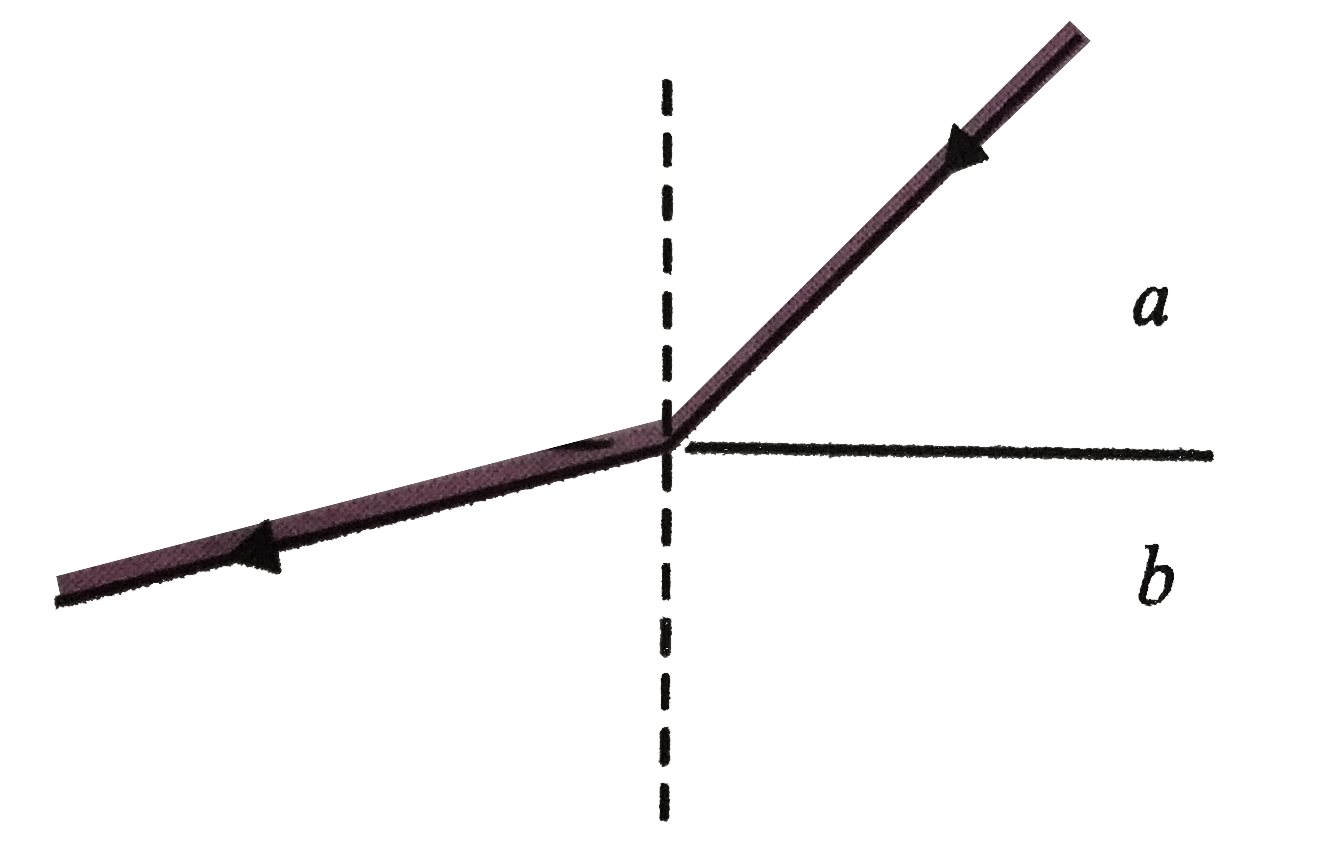Assertion (A) : Kerosene having higher refractive index is optically denser than water, although its mass density is less than that of water.
Reason (R) : The speed of light decides whether a medium is optically rarer or optically denser. As optically denser medium may not possess greater mass density.
Both Assertion (A) and Reason (R) are true and Reason (R) is the correct explanation of Assertion (A).
Both Assertion (A) and Reason (R) are true, but Reason (R) is not the correct explanation of Assertion (A)
Assertion (A) is true, but Reason (R) is false.
Assertion (A) is false, but Reason (R)is true.
Step-by-Step Solution:
1. Understanding the Assertion:
- The assertion states that kerosene has a higher refractive index than water, which makes it optically denser despite having a lower mass density.
- The refractive index (μ) is defined as the ratio of the speed of light in vacuum (c) to the speed of light in the medium (v):
μ=cv
- For kerosene, the refractive index is approximately 1.44, while for water, it is approximately 1.33. Since 1.44 > 1.33, kerosene is optically denser than water.
2. Analyzing the Reason:
- The reason provided states that the speed of light in a medium determines whether it is optically rarer or denser.
- A medium with a higher refractive index has a lower speed of light (v) in that medium compared to vacuum. Therefore, a higher refractive index indicates that light travels slower in that medium.
3. Connecting Assertion and Reason:
- The assertion is true because kerosene, with a higher refractive index than water, is indeed optically denser.
- The reason is also true as it correctly explains that the speed of light in a medium determines its optical density.
4. Conclusion:
- Both the assertion and the reason are true. The assertion correctly identifies kerosene as optically denser than water due to its higher refractive index, and the reason accurately describes the relationship between speed of light and optical density.
Final Answer:
- Assertion (A): True
- Reason (R): True
- The assertion states that kerosene has a higher refractive index than water, which makes it optically denser despite having a lower mass density.
- The refractive index (μ) is defined as the ratio of the speed of light in vacuum (c) to the speed of light in the medium (v):
μ=cv
- For kerosene, the refractive index is approximately 1.44, while for water, it is approximately 1.33. Since 1.44 > 1.33, kerosene is optically denser than water.
- The reason provided states that the speed of light in a medium determines whether it is optically rarer or denser.
- A medium with a higher refractive index has a lower speed of light (v) in that medium compared to vacuum. Therefore, a higher refractive index indicates that light travels slower in that medium.
- The assertion is true because kerosene, with a higher refractive index than water, is indeed optically denser.
- The reason is also true as it correctly explains that the speed of light in a medium determines its optical density.
- Both the assertion and the reason are true. The assertion correctly identifies kerosene as optically denser than water due to its higher refractive index, and the reason accurately describes the relationship between speed of light and optical density.
- Assertion (A): True
- Reason (R): True
Topper's Solved these Questions
- QUESTION PAPER 2022 TERM 1 SET 2BOOK - X BOARDSCHAPTER - QUESTION PAPER 2022 TERM 1 SET 2EXERCISE - SECTION C
4 Videos
- QUESTION PAPER 2022 TERM 1 SET 2BOOK - X BOARDSCHAPTER - QUESTION PAPER 2022 TERM 1 SET 2EXERCISE - SECTION C
4 Videos
- QUESTION PAPER 2022 TERM 2 SET 1BOOK - X BOARDSCHAPTER - QUESTION PAPER 2022 TERM 2 SET 1EXERCISE - SECTION - C
4 Videos
Similar Questions
Knowledge Check
When a light ray passes from an optically denser medium into an optically rarer medium,
Aits velocity increasesBfrequency requency remains sameCwavelength increasesDAll the aboveThe ray of light travelling from an optically denser medium to optically rarer medium bends
Atowards the normalBalong the normal.Caway from the normalDby reversing its path.When light travels from an optically rarer medium to an optically denser medium, the velocity decreases because of change in
AwavelengthBfrequencyCamplitudeDphase
When a light ray travels obliquely from an optically rarer medium to an optically denser medium, it bends away from the normal
View SolutionAn optically denser medium is that in which speed of light is more than that in air or vaccum.
View SolutionA ray travels from optically rarer to optically denser medium : i>r:: A ray travels from optically denser to optically rarer medium : ____
View SolutionWhen a ray goes from an optically rarer medium to a denser medium, it:
View SolutionWhen the ray of light travles from an optically denser medium to optically rarer medium the maximum value of angle of refraction is
View Solution

